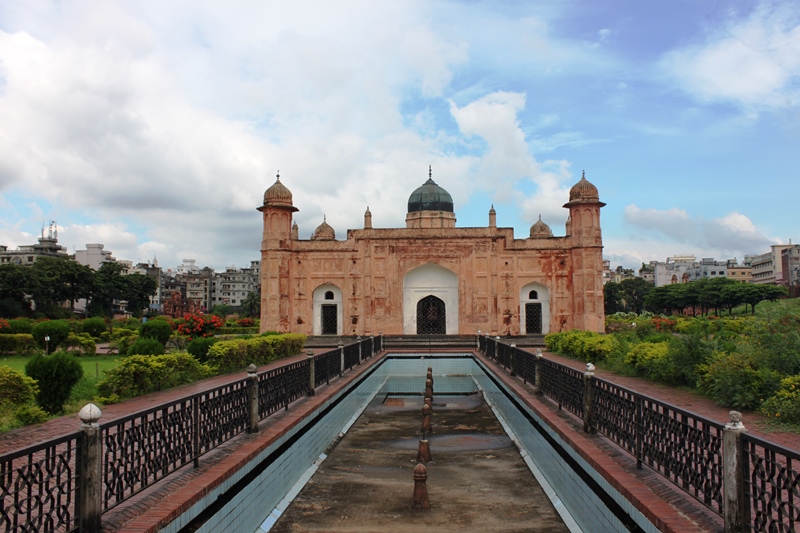
Lalbagh Fort is still one of the finest places in Dhaka City that original Dhakaite people (Dhakaiya) consider for. I visited several times in this fort to spend leisure time with solo and friends from my teenhood. Lalbagh Fort took a very special place in my heart. I still visit alone whenever I get time. My last visit during Pandemic times, refreshed me to blog for Lalbagh Fort. I just love visiting this place time and again. Now I’ll explain the backdrop of Lalbagh Fort to my readers those who are not aware of this majestical fort. Lalbagh Fort, locally known as Lalbagh Kella is a great architectural artwork by Mughal Empire in Bangladesh. The Fort is located in the southwestern part of Dhaka, the capital city of Bangladesh, which is commonly known as old Dhaka. The Lalbagh Fort is one of the most popular places among local inhabitants.
THE BACKDROP OF LALBAGH FORT
From the page of history, it was known that Subahdar (Governor) Mohammed Azam Shah, third son of Mughal Emperor Aurangzeb, later became emperor, began the construction of the Fort in 1678. Due to a sudden call from Delhi, Prince Azam handed over the incomplete Fort to the new Subahdar Shaista Khan for completion. While construction was going on, Iran Dukht (locally known as Pari Bibi), the daughter of Shaista Khan had died inside the fort. Local people know that there is a grave of Pori Bibi and visitors pray for the departed soul. After the death of his daughter, the Subahdar Shaista Khan started to consider the Fort as a bad omen and discontinued the work. The Fort remained incomplete, though Shaista Khan stayed in Dhaka up to 1688.
The visible architectural monuments within the Fort were — the Diwan-i-Aam and the Hammam on its west, the Tomb of Pari Bibi, and the Lalbagh Fort Mosque — all completed by 1684. There is also a huge garden in the Fort which draws the attention of the general visitors. I can recall, I have been visiting this Fort since my school days in the way back in 1988.
THE DIWAN-I-AAM AND THE HAMMAM OF LALBAGH FORT
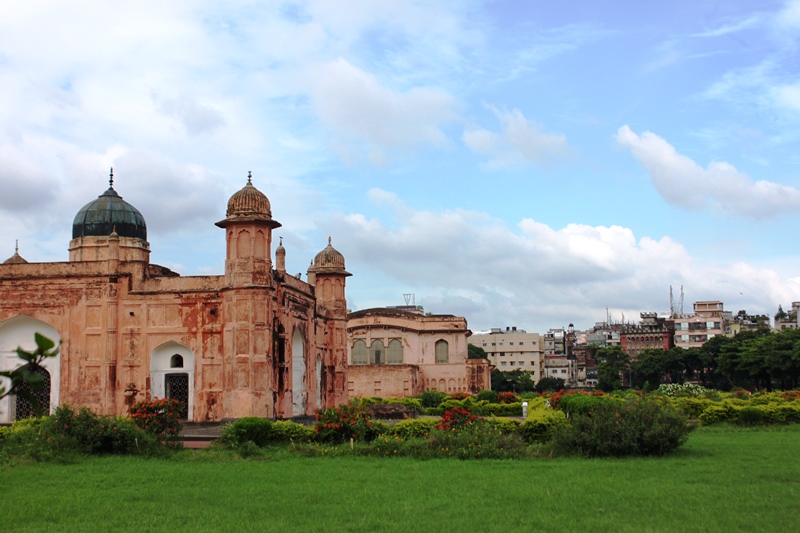
The two-storeyed Diwan-i-Aam is an elegant structure and only open monument to visitors of the Fort. The building is located in the east and attached with a single-storeyed Hammam (bath house) on its west. The Hammam building has an underground space for boiling water and a channel for sewage. A long wall leads north-south along the western frontage of the Hammam is separated the entire fort into two parts. The architectural memorial has a small but valuable museum where you can see coins, painting, calligraphy, carpets, swords, and firearms of the Mughal period.
THE TOMB OF PORI BIBI
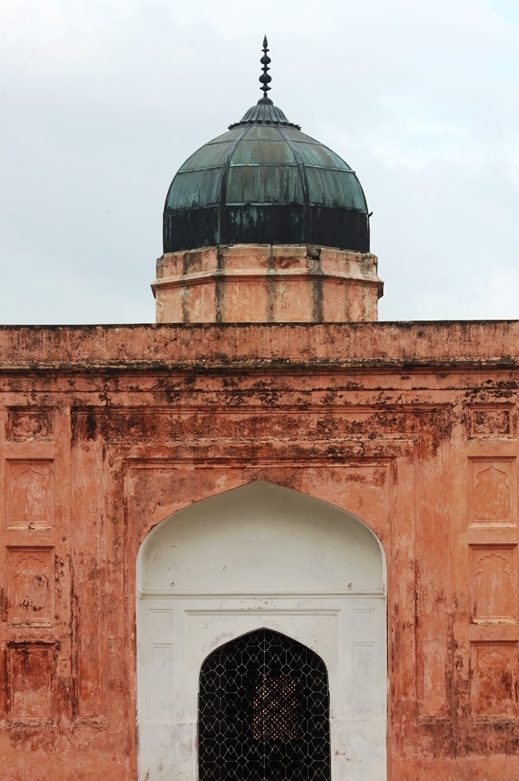
This one-storied Mazar building, one of three focal architectural works of the Fort. The tomb is made of unusual construction materials of black basalt. In the picture, it is clearly seen. Inside the Mazar, white marble and encaustic tiles of different colors have been used to decorate its interior. Where Pori Bibi is buried, is entirely surfaced with white marble.
THE LALBAGH FORT MOSQUE
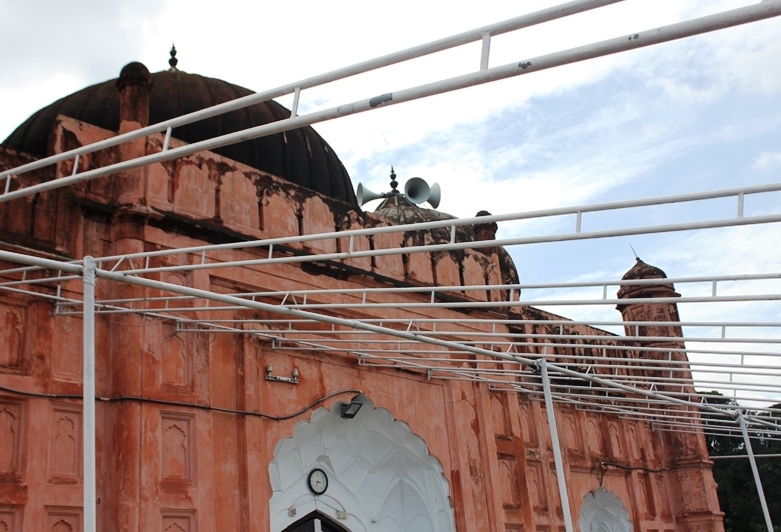
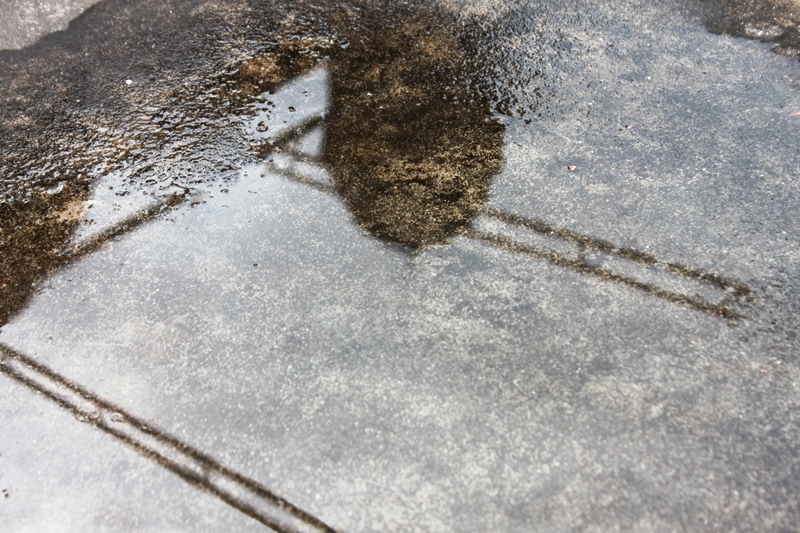
Lalbagh Qilla Mosque, 337 years old till to date
The three domes give the mosque an authentic view. Since I don’t have drone camera, I still have limitations to take shot like a pro. However, I tried to give an abstract look of the mosque through water reflection. During the lockdown period, everything shuts down except for this beautiful little mosque. The front gate of the Mosque is open to outside so people can enter the mosque from north side of the Kella premises.
GARDENS AND GREENERIES
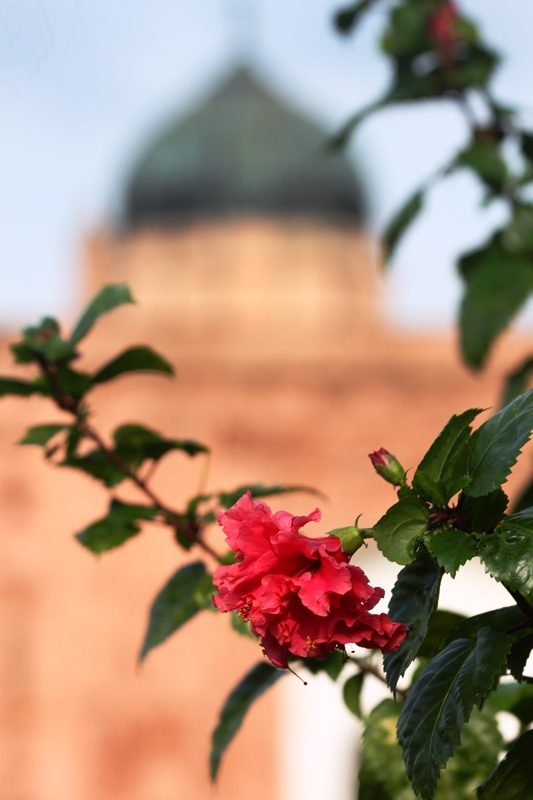
There are beautiful flower gardens and green fields inside the fort property. Different colorful flowers and open green spaces have made the fort attractive to all people, especially to children. In fact, in this crowded city, the fort is a wonderful place to visit with friends and family, spend quality times in the greeneries, take photos and capture some moments with loved ones. I remember, I went several times with my close friends and girlfriend once.
A COUPLE OF MYTHS
Few myths have rambled around the Lalbagh Fort from the construction time to the present date. It is widely believed among historical past and debates that the Fort is the unfulfilled dreams of Subahdar Azam. When He (Azam) went back to Delhi Moshnod, the new Subahdar Shaista Khan continued the construction but he stopped because of the unexpected death of his much-loved daughter Pori Bibi. Myths say Pori Bibi was in love with Prince Azam. There is another myth about Pori Bibi; she was actually an Ahom princess, converted to Islam, and married off to Prince Azam. However, on all debates, she was a loving daughter, a short-lived beautiful lady, and a hapless beloved, who couldn’t accept the departure of her prince.
Very weird myth, people of Lalbagh still believe Pori Bibi’s unsatisfied soul walks around the lanes of Old Dhaka. En passant, ‘Pori’ means fairy or beautiful lady in the locale. This beautiful lady was seen wandering around in the streets of Lalbagh in dismay.
MYTHICAL CONCLUSION
I know, all these myths are subjective. People can trust or cannot trust. But as a writer, I believe it Is a fairy-tale where the benefit of doubts exists. Mentioned myths are important to some segments of the Lalbagh olden society. But in this modern society today, people hardly know about Pori Bibi’s saga. Lastly, I would say even after 337 years later, I could probably feel the pain of Pori Bibi for not getting her desired ones. May Allah give the salvation of her soul that ramped around the lane of Old Dhaka?

